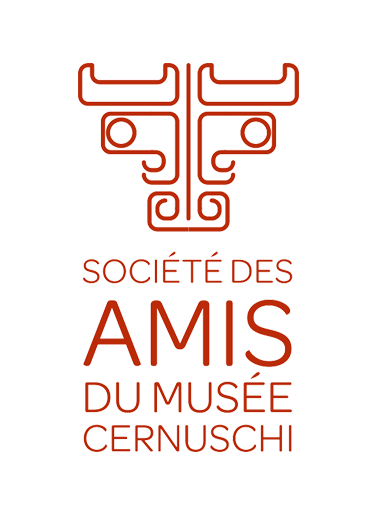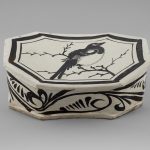Lintel decorated with a frieze of animals and an immortal
Han tombs were adorned with multiple decorations figured on stamped hollow bricks, wall paintings or carved reliefs. The motifs of this lintel or this architrave thus belong to an iconographic program whose meanings should be studied on the scale of the funerary complex to which the piece belonged.
Unfortunately, the provenance of this sculpted element remains unknown today. The friezes of real and fantastic animals as well as the representations of winged men, whose hybrid features then characterized the figurations of immortals, are however sufficiently frequent in Han funerary furniture to be able to restore part of the meaning of this object. Indeed, if these motifs cannot be attached to a particular text, they are the expression of beliefs relating to a form of immortality or life after death. These beliefs are often evoked on the tops of doors and passages in tombs.
At a time when Taoism does not yet exist as an established religion and when Buddhism is just beginning to spread in China, they are likely to be expressed by means of an abundant iconography, which draws without exception from multiple sources.
Cartel:
Lintel decorated with a frieze of animals and an immortal
Pierre
Eastern Han Dynasty (25-220)
H.53 cm x L.269 cm x W.15 cm
MC 6862
Gift SAMC, 1922
Photo credit :
© Paris Museums / Cernuschi Museum
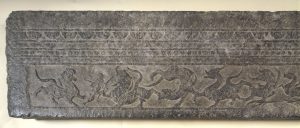 Large lintel, China Han period between 206 BC and 220 (left part). Paris, Cernuschi Museum. |
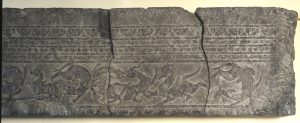 Large lintel, China Han period between 206 BC and 220 (right part). Paris, Cernuschi Museum. |
